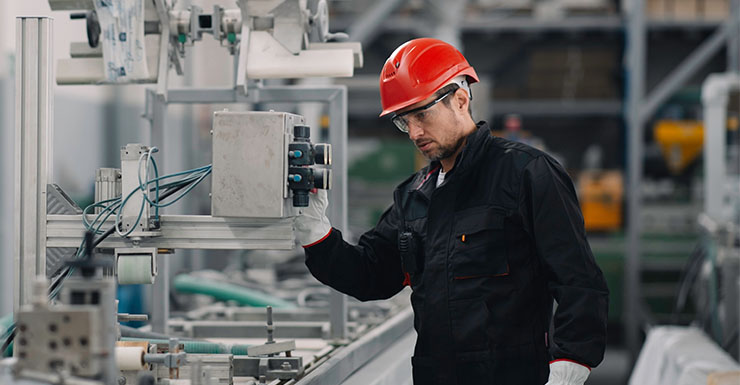Is Your HR Tech Stack Falling Short for Your Deskless Shift Workers?

Many workforce technology tools are designed to accommodate traditional office workers. However, research indicates 80% of the current workforce comprises non-office-based workers, a percentage that’s predicted to only rise. Non-office workers—also known as deskless workers—are individuals who do their jobs without a designated office space. They are often hourly shift-based workers, such as those working on a manufacturing line or in a retail store. And many are currently being left behind with lacking digital workforce management solutions. That’s because until recently, it wasn’t considered essential that this worker population be tethered to workforce technology to do their jobs.
With the right tools and a strong plan, you can better address the needs of your deskless workforce by improving their ability to do their jobs and reap the benefits accordingly. Every organization has different needs, and a plan that works for one might not work at all for another. However, as you work to better address the needs of your deskless shift workers and integrate the tools required to do so effectively, it pays to follow a few basic guidelines.
Prioritize Communication
Communication at the time and place work happens is a foundational component to engaging the workforce, especially with hourly-based shift workers that do not operate in an office environment. These employees need access to critical information in the moment. Unfortunately, the reality for many companies is that deskless shift workers are often the last ones to receive important information.

It’s tempting to think of deskless shift workers as either nonessential in some manner or else self-sufficient enough to handle the lag in communication. However, such a lag is both unnecessary and potentially damaging to your organization.
Hourly based shift workers, although seemingly removed from a working office environment, still require easy access to communication tools to stay in contact with their managers regarding their schedules, payroll, employee documents, upcoming training, etc.
That, in turn, improves their productivity and work-life balance. The benefits to the company include not only higher quality work overall but also saved time and resources to better direct elsewhere. Employees will automatically feel an increased sense of loyalty to the company, and new recruits will be more inclined to sign on knowing your business provides the flexibility to help them balance their work and personal lives.
All of that is dependent on clear communication. This includes more than just texts and emails. It means performance feedback, company news, updates on different projects, and contact with managers and co-workers, among other things. That, in turn, helps deskless shift workers feel more connected to the company and drives up productivity levels.
It also improves relations among workers, facilitates management access, and otherwise ensures they don’t become an issue for the organization. Software platforms and portals with centralized communication capabilities (ideally a mobile app version) let workers access the data they need wherever they are so they can get on with their tasks without delay.
Make Learning and Development Accessible
Most workers benefit from learning opportunities. But even in this vital area, the deskless shift worker equation is skewed. Training is often more readily accessible to in-office employees compared to deskless workers.
Managers and team leaders can bridge this gap in a number of ways, including making training modules available and easily accessible online so frontline workers can complete the courses while on the job. That can take any number of specific forms, but regardless of the details that work for your organization, flexibility is key. These workers need to access learning materials within the flow of their existing hourly-based shift work — and review it in a timely fashion. By extension, many employees benefit from carefully measured training processes designed to be absorbed quickly and efficiently.
Here again, the benefits of a centralized software platform make themselves known. With it, learning and development content can be made available to any team member, providing centralized access that they can download and absorb on their timetable. That provides the benefits of a formal class or training session in a format that they can readily use. The more accessible you can make such benefits, the higher your chances of retaining skilled workers and attracting the best people.
Provide Necessary and Appropriate Tools
In addition to reliable streams of communication, what deskless shift workers need most is mobility. Accessing a centralized data pool via an app on their phone lets them receive updates, make changes, and otherwise stay connected to work no matter where they are. The average person already engages with every major asset of their life via their personal devices; their work should be no different! Any software tools or similar work-related platforms need to be integrated with that in mind.

If a worker can essentially take the office with them on their phone, then they can engage with their managers from anywhere. It minimizes or eliminates time delays, allows deskless shift workers to respond in real-time, and ensures that your workforce operates as intended.
As with other guidelines in this blog, reaping all the benefits depends entirely on flexibility. Mobile apps and similar tools allow deskless shift workers to tend to personal matters without losing contact with the manager or the main office. That provides demonstrative support to handle anything from team interaction and information exchange to car repairs and doctor’s appointments. The employee experience is improved, and both loyalty and productivity levels rise.
It impacts hiring as well, as the numbers clearly show. Nearly 80% of deskless shift workers say the technology (usability and functionality) provided by potential employers will ultimately influence their choice to join or not. Easily accessible features via apps allow Human Resources (HR) teams to offer such benefits readily. That further improves employee loyalty and connectivity, while providing the ability to attend to other aspects of their life. When deployed properly and integrated smoothly, the right tools can make this almost automatic.
Foster Company Culture Virtually
Company culture is an effective way to further facilitate all of the guidelines already discussed. In most cases, it favors workers in a centralized work location who can be addressed personally. People can attend work events, celebrate birthdays, and engage in one-on-one sessions with managers, for example—things that drive company culture growth and foster a sense of teamwork.
Coworkers function better in transparent, collaborative, and communicative environments. The overall sense of camaraderie that such a climate provides boosts morale and efficiency as well. Without access to that centralized space, however, a deskless shift worker loses these benefits. They’re more likely to feel isolated from their co-workers, and the disconnect can affect not only their ability to communicate effectively with the rest of their team but also make it harder to do their jobs effectively.
Considering the advancing state of technology and the kind of business software packages designed for precisely such a challenge, managers now have an alternative viable solution. Virtual engagements can include frontline teams in meetings and various social events, as well as webinars and other all-company gatherings.
But it can also go beyond that. You can provide the kind of flexibility that deskless shift workers require without losing the bonds that a positive company culture yields. That can include things like celebrating milestones and achievements or sending promo codes for gifts or meal orders during company parties. Similarly, centralized virtual spaces allow deskless workers to keep in contact with their co-workers in ways they might not otherwise be able to access. This strengthens relations between team members and nurtures a virtual company culture that provides all the benefits of a physical one.
Manage Deskless Shift Workers by Embracing Technology
Embracing new technology can help organizations understand and master these guidelines, then apply them for their deskless workforce. The resulting connections foster enhanced communication between employees in different work locations, resulting in higher productivity.
A centralized software platform with mobile applications to service ALL your workers is the ideal way to accomplish this. HR departments and managers can use it to keep their team members in touch and up-to-date while simplifying the myriad of organizational tasks crucial to a hybrid workplace.
That’s where WorkForce Software steps in. Designed as a comprehensive and adaptable tool for handling the unique needs of deskless shift workers, you can provide:
- Scheduling, time and attendance management and labor optimization, as well as absence or leave recording, automating critical workflows and ensuring compliance.
- Smart Communications with chat, broadcast channels, and collaboration spaces to foster team connections, along with survey and training options that ensure employees are enabled to do their best work no matter where that happens.
- Predictive AI analytics to identify potential problem spots and effectively solve complex labor optimization problems.
- The ability to adapt and grow in order to meet the unique needs and challenges of your business, as well as that of the new work arrangement realities.
All of which allows you to run your operation smoothly while fostering a work environment where every team member stays in touch, in tune, and is invigorated. The business world has changed for good, but with the right tools and a smart plan, you can ensure your HR tech stack doesn’t fall short and your deskless shift workers have what they need to stay connected and constructive.
Get in touch today and discover how WorkForce Software leverages consumer-grade technology so that thousands of deskless shift workers are empowered to interact with each other and their managers, becoming integral links of your business operational chain.
Subscribe to The WorkForce Blog
Learn the art and science of maintaining productive, happy, engaged employees.
Discover More
Nucleus Insights from WorkForce Customers Research Note
Nucleus Research interviews WorkForce customers who validate why we’re ranked the #1 WFM enterprise vendor for 10 consecutive years.
Elevate Employee Experience: Checklist for Operational Leaders
Get the practical steps and technology functionalities operation leaders need to improve their employees’ work experiences.
Streamlining Complex Workforce Compliance Requirements Boosts Productivity
Discover how workforce compliance software helps EMEA organisations navigate complex legislation, enhance compliance and boost operational efficiency.



